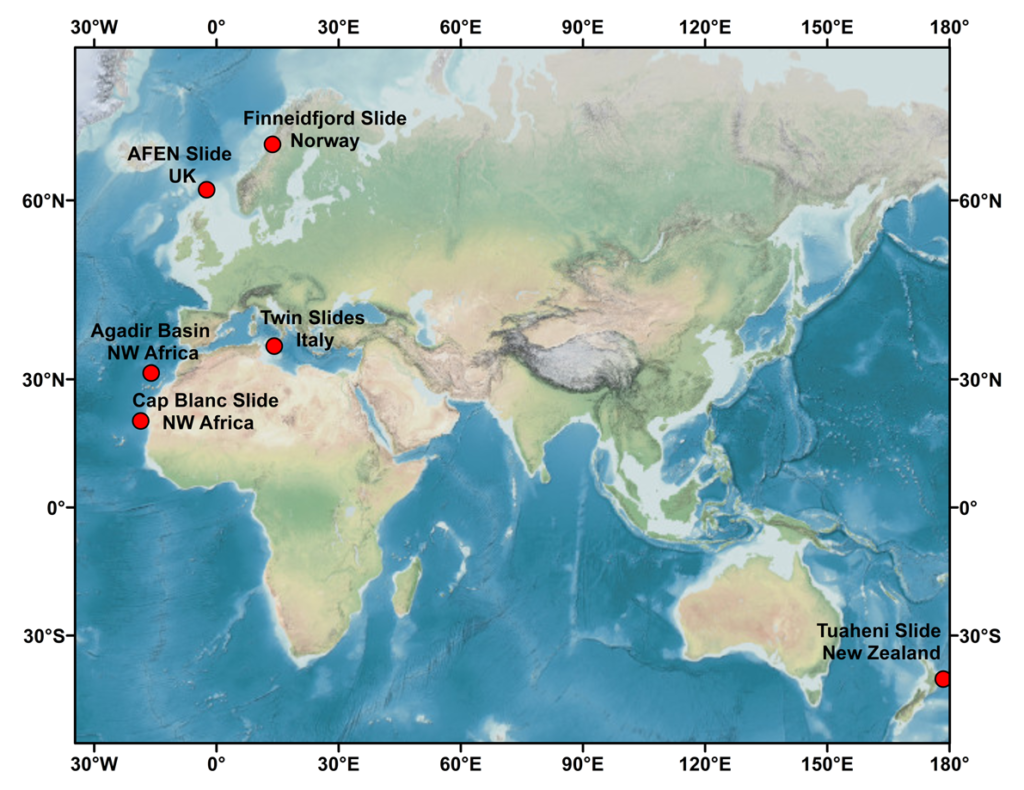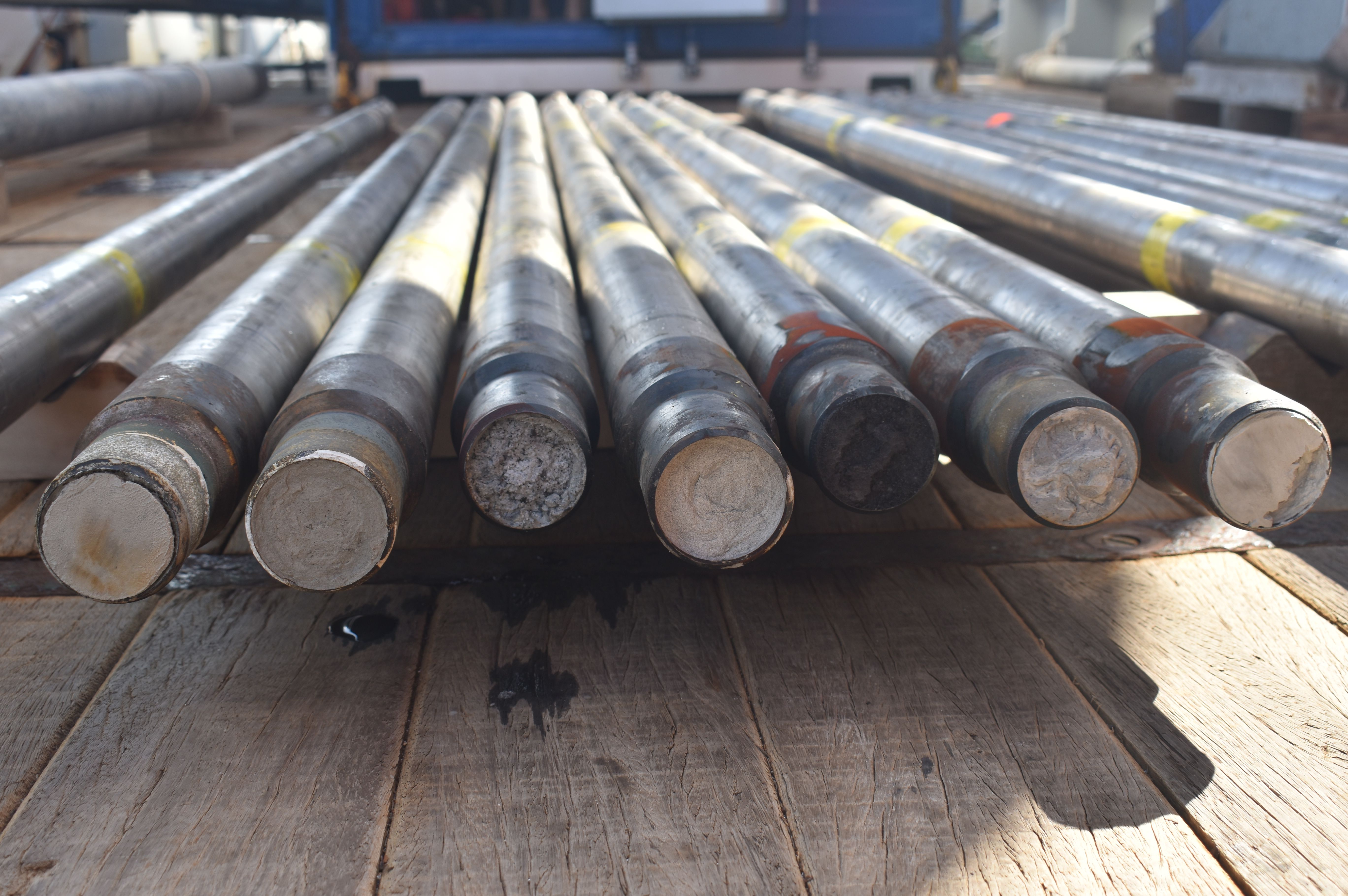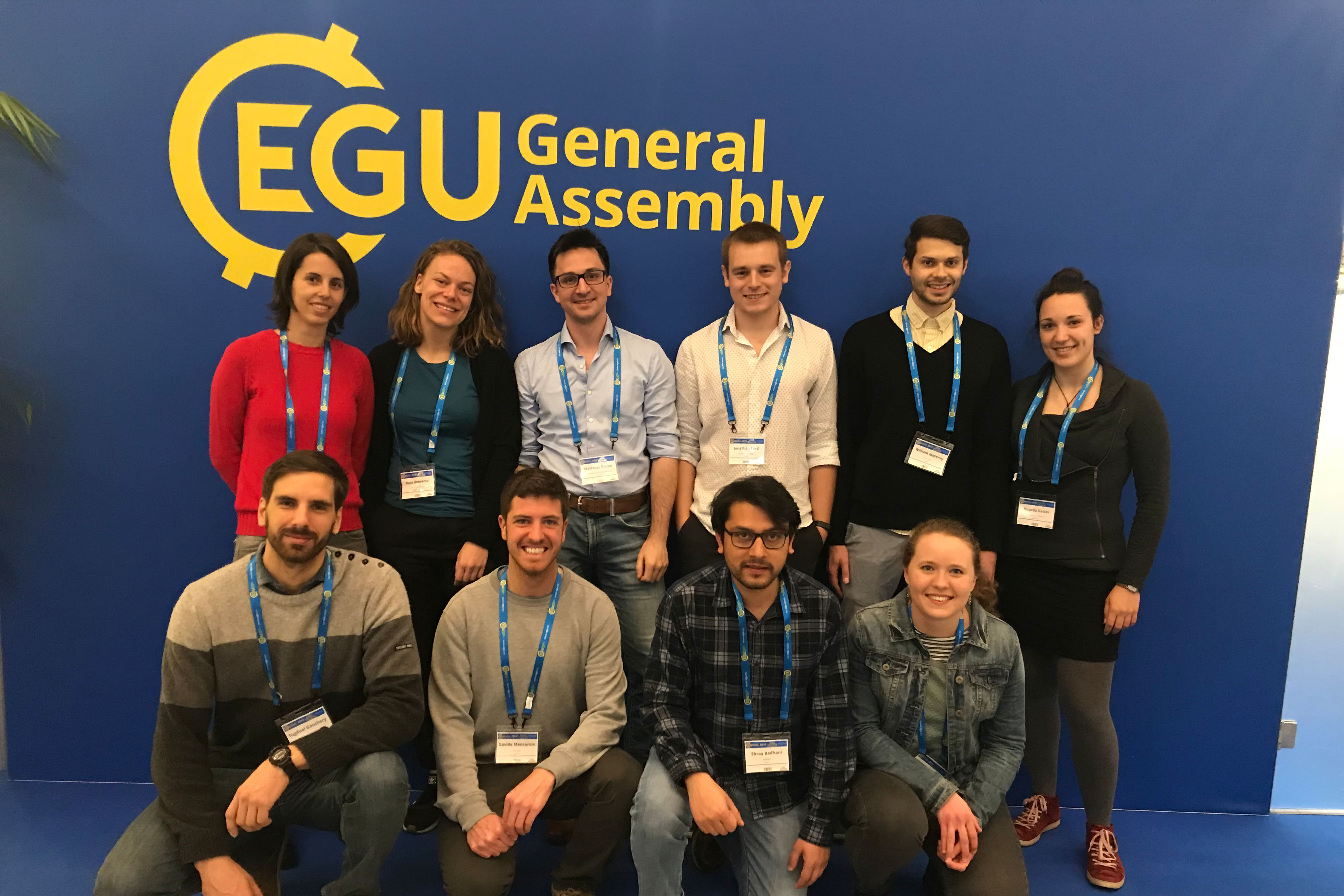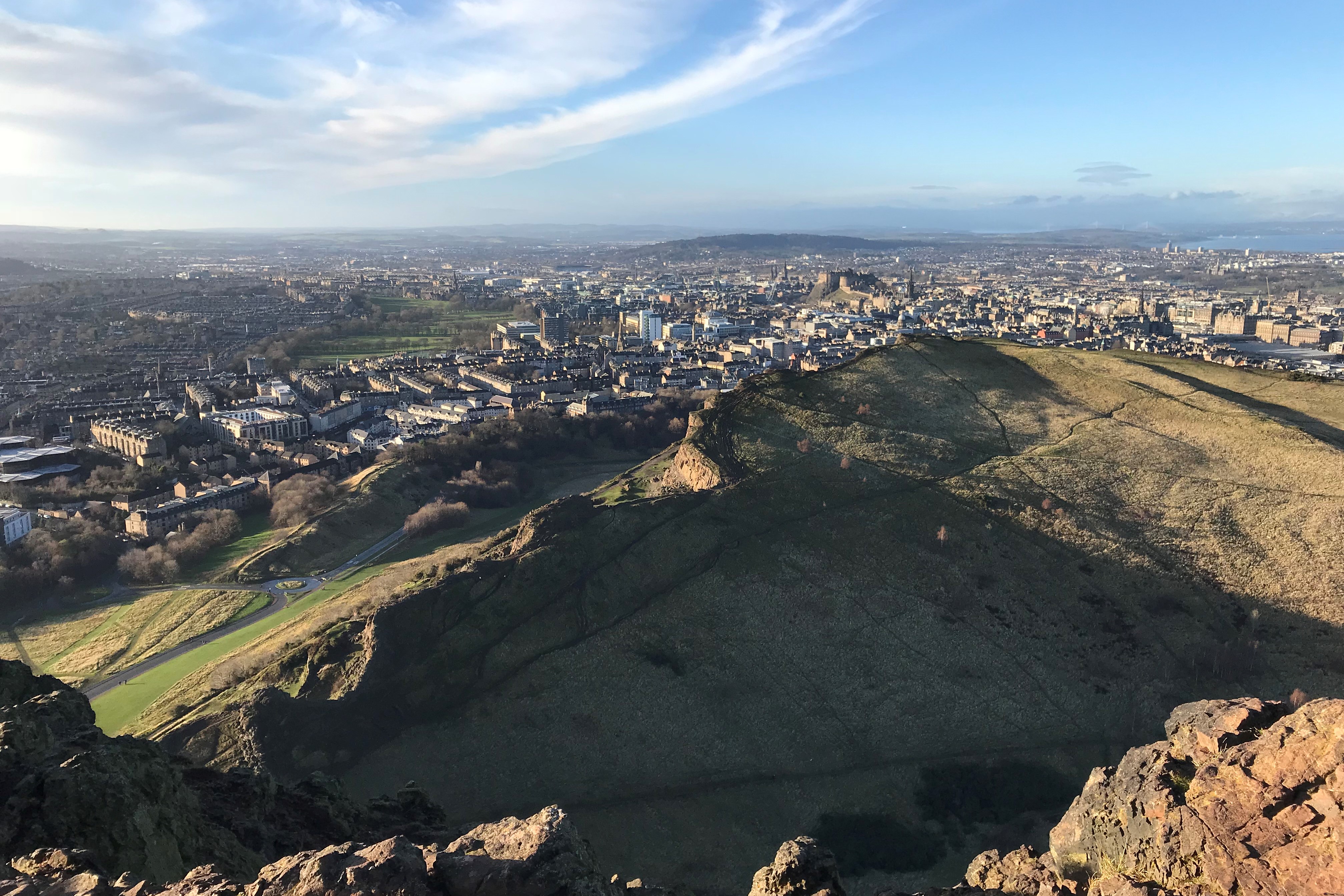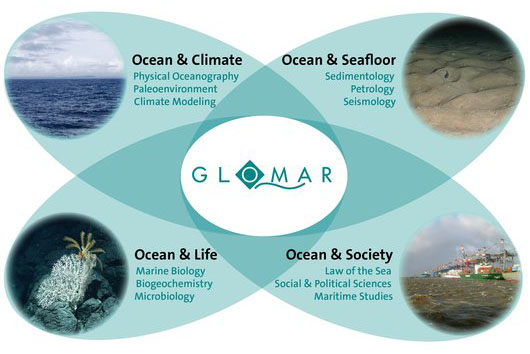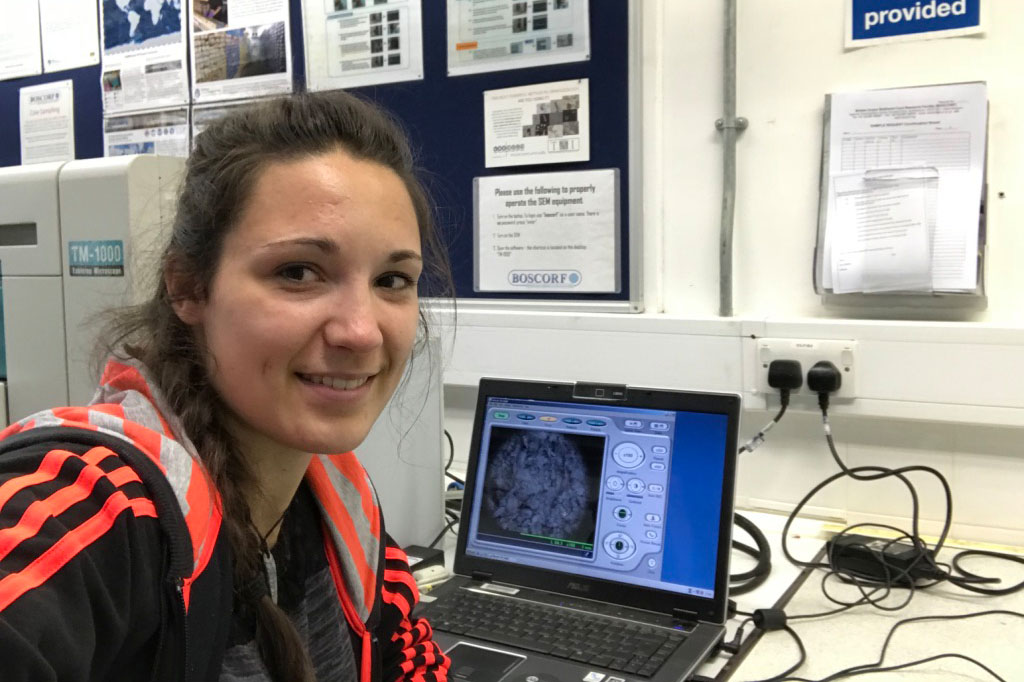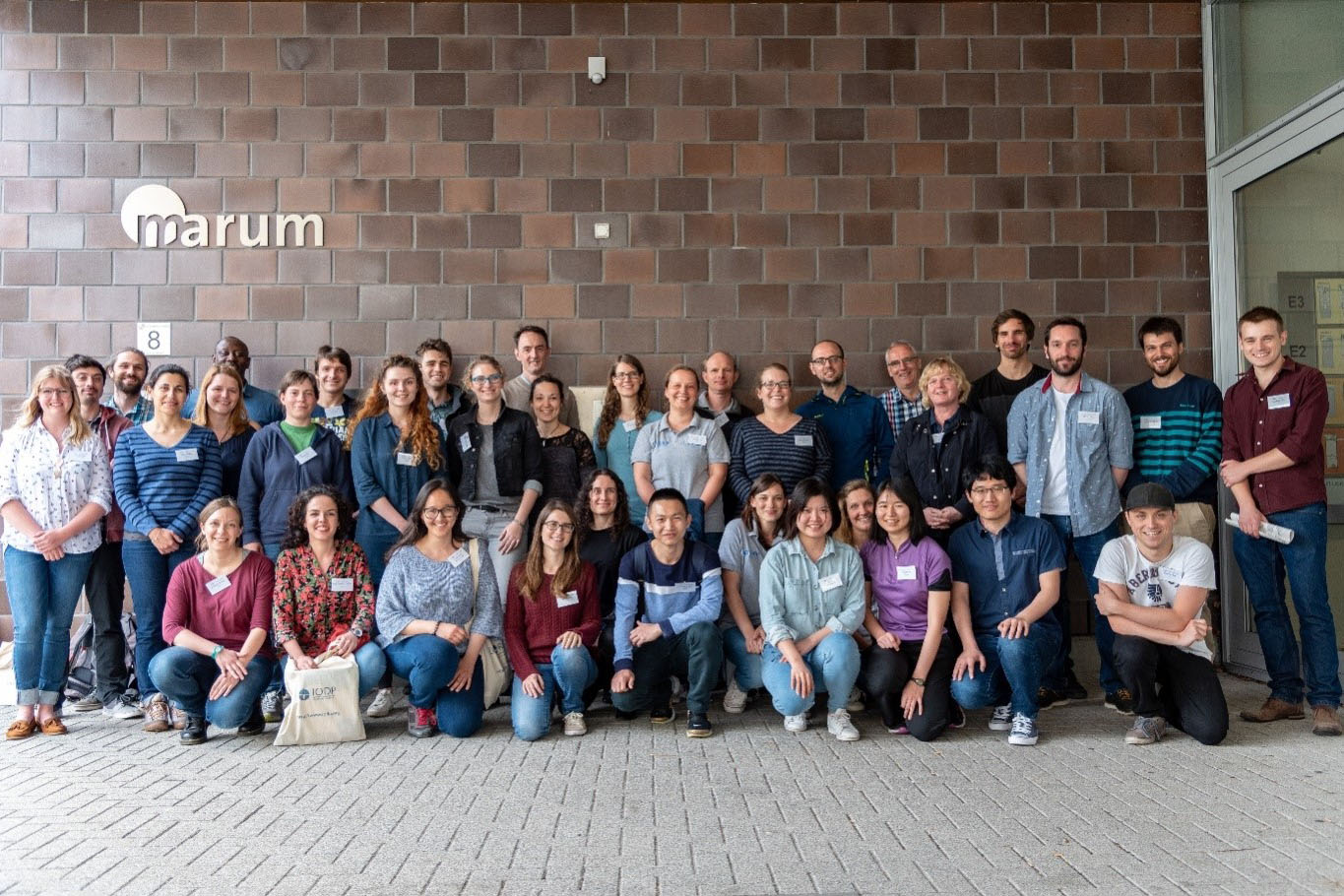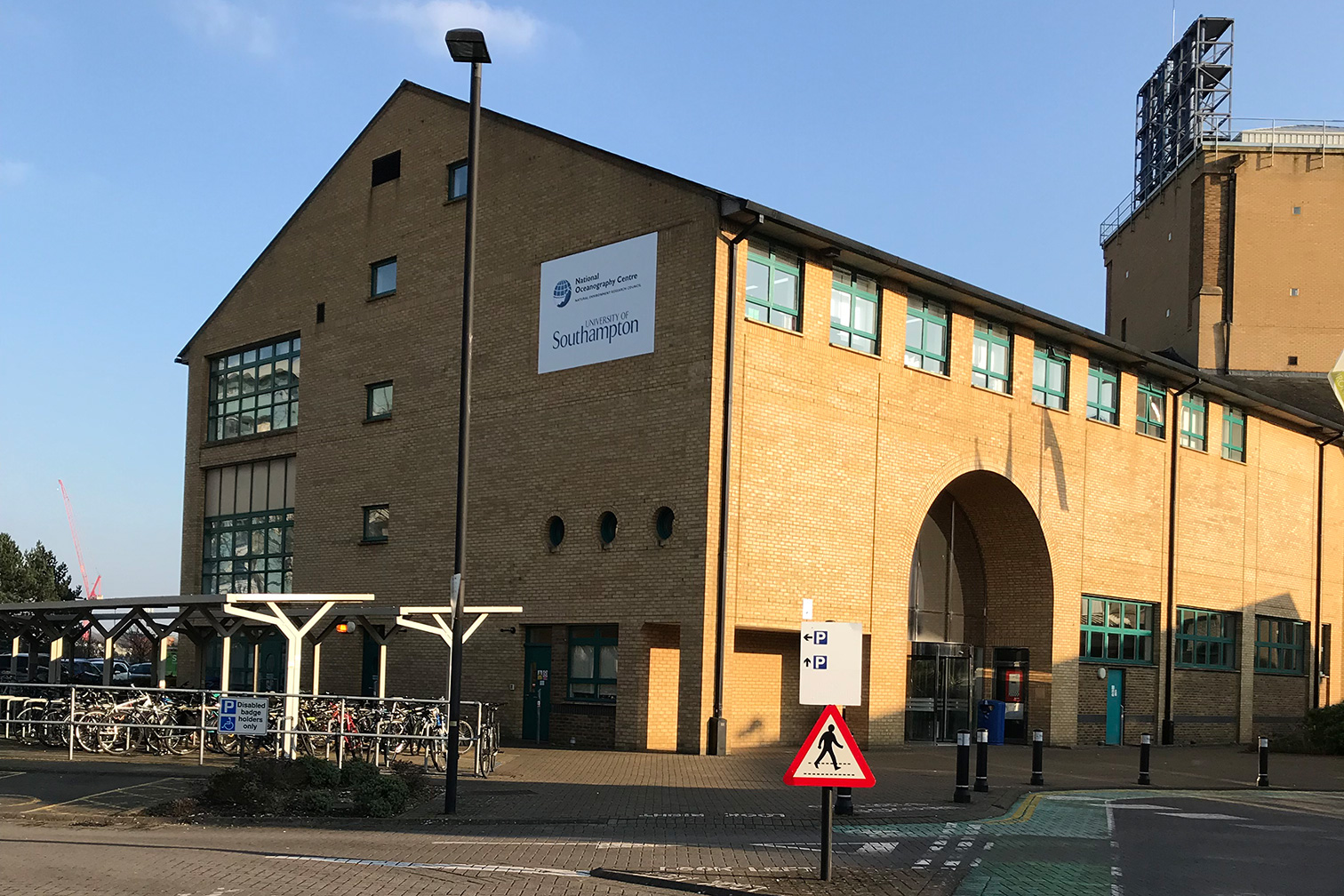
Micro-mechanics of failure planes
Ricarda Gatter | Marum
Research
Almost 20 years ago, in July 1998, a tsunami struck Papua New Guinea and devastated three villages, causing the death of over 2200 people. In 1996, a landslide initiated offshore Finneidfjord, Norway, and removed a 250 m long section of the main north-south highway, due to the slide’s retrogressive behaviour. Although these events highlighted the importance of submarine landslide research, the potential hazard related to submarine landslides was already recognised in 1929. A large slide and the flow of sediment it generated broke telecommunication cables off Grand Banks. However, to enable the assessment and effective mitigation of this hazard, one needs to understand the underlying mechanisms first. What causes submarine landslides? What are the pre-conditioning factors and triggering mechanisms? How do submarine landslides behave during runout?
I focus on the factors that pre-condition slope failure. Many studies have shown that basal failure planes of submarine landslides coincide with mechanically weaker layers embedded within the slope stratigraphy. Pore pressure fluctuations along potential weak layers, e.g. embedded volcanic ashes or fossiliferous soils whose particles can break down under loading, can decrease the shear strength of the sediments and hence, undermine slope stability. Although many studies have assessed the influence of sediment composition on the physical properties and shear strength of sediments, the processes occurring prior and during the initial failure are still poorly understood, as these cannot be directly observed or monitored. In this project, I will conduct a number of 3D numerical shear experiments, utilising granular simulation techniques (e.g., PFC3D), to investigate the failure processes at the initial stages of submarine landslides.
Methods
In a first step, I will compile a comprehensive dataset of µ-CT (micro- Computed Tomography) measurements of a wide range of sediment cores from different submarine landslides. These include cores from the Finneidfjord Slide (Norway), the AFEN Slide (UK), the Twin Slides (Italy), the Cap Blanc Slide (NW Africa), and the Tuaheni Slide (New Zealand). From this dataset, I will gather compositional and textural information of the material near the basal failure planes of the slides. The resulting information will directly act as input data for the numerical models.
By means of the 3D numerical simulations, which mimic geotechnical shear tests on a micro-(grain)-scaled level, I will investigate the fabric evolution of different materials under shearing with time. Of particular interest will be (A) a simplified ash and (B) a diatom sediment, and the changes in their shearing behaviour due to variations in the ash and diatom contents. The grain-scaled level is necessary in order to discern the spatial and temporal evolution of shear zones. Where does strain accumulate and where do basal failure planes form (above, inside, or below the weak layer)? This information is necessary to gain a deeper understanding of the failure mechanism and hence, the slide evolution itself.
- Modelling of Sedimentation Processes
- Katrin Huhn (MARUM)
- Michael Clare (NOC)
- Jannis Kuhlmann (MARUM)
- James Brown (FUGRO UK)
TEAM
NEWS
2020
@ Sharing Geoscience Online (4-8 May)
ESR 10, ESR 2, ESR 4, ESR 5, ESR 6, ESR 9, News
The biggest geoscience conference in Europe went online this year – but did it work? Read what our ESRs thought about this year’s EGU General Assembly, as conveners, authors/presenters and visitors.
2019
@ CNR-ISMAR Bologna, Italy (15 – 21 September 2019)
ESR 13, ESR 9, General, News
What are turbidites? What do they look like? And why should we care? Find out what our ESRs discovered during their third annual SLATE meeting and what else happened during the week in Bologna.
@ Vienna, Austria (07 – 12 April 2019)
Conferences, ESR 1, ESR 12, ESR 13, ESR 14, ESR 15, ESR 2, ESR 3, ESR 4, ESR 5, ESR 6, ESR 7, ESR 8, ESR 9, News
ESRs share their experience at the EGU General Assembly 2019 hosted in Vienna, Austria. Posters, oral presentations, PICOs and much more.
@ Edinburgh, Scotland (18-19 Dec 2018)
Conferences, ESR 10, ESR 5, ESR 9, News
Kate (ESR5), Ricarda (ESR9) and Maarten (ESR10) participated at the British Sedimentological Research Group Annual Group Meeting (BSRG AGM 2018), which was held the 19th and 20th of December 2018 in Edinburgh, United Kingdom. Read about their experiences of this conference here!
2018
Courses, ESR 11, ESR 7, ESR 9, News
Graduate schools can provide PhD students valuable support in a variety of ways. In this blog, Ting-Wei (ESR 7), Ricarda (ESR 9) and Monika (ESR 11) introduce GLOMAR, the international graduate school for marine sciences in Bremen. Read more about networking opportunities, seminars and offered courses!
@ NOCS / University of Southampton
ESR 9, News, Secondments
After a first, shorter secondment at NOCS and the University of Southampton in February, Ricarda returned to Southampton in May to continue her work on µCT (micro-Computed Tomography) data, focussing in particular on data from the AFEN Slide (UK) and the FInneidfjord Slide (Norway).
@ MARUM, Bremen, Germany
ESR 11, ESR 2, ESR 3, ESR 4, ESR 6, ESR 7, ESR 9, News
From 23rd to 27th April, a group of seven SLATE ESRs participated in the ECORD Training Course 2018, which took place at MARUM – Center for Marine Environmental Sciences, Bremen. This one-week course provided a “Virtual Ship Experience” and prepared the young researchers for sailing in an offshore drillship expedition.
@ NOCS / University of Southampton
ESR 9, News, Secondments
In my PhD project, I investigate factors that pre-condition submarine slopes to fail. I focus on the characterisation of the material near the basal failure planes of different slides and the material’s behaviour prior and during the initial stages of slope failure. The processes occurring prior and during failure are still poorly understood, as they cannot be directly observed or monitored, at least not on a grain-scaled level.


